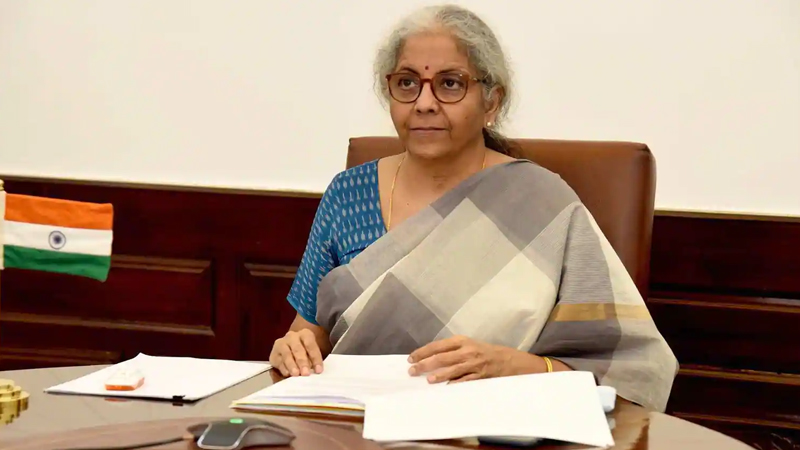Nirmala Sitharaman
This year, we mark 30 years of the deregulation of the Indian economy. It began, as some would argue, under the compulsion of the Fund and the Bank, with a looming balance of payment crisis. By then, the economy was almost completely constricted by the rule of licences, quotas and discretion, with no breathing space for enterprise. Suffocated as it was, the economy welcomed the breath of fresh air with the liberalisation of 1991. We recall the political will of Prime Minister (PM) PV Narasimha Rao and an abiding finance minister (FM) Dr Manmohan Singh for having pulled it through.
If we commend that leadership for rescuing India from “falling off the cliff”, we also should condemn them for losing an entire decade for India, when they, under the leadership of the former FM-turned-PM, failed to carry on that momentum. It was a matter of sheer absence of political will and commitment.
Just before that lost decade, PM Atal Bihari Vajpayee showed this political will and commitment in planning for the Goods and Services Tax (GST). However, that failed to take off between 2004 and 2014. Both GST and the Insolvency and Bankruptcy Code (IBC) were passed by the Narendra Modi government in its first term.
The National Democratic Alliance (NDA), under PM Modi, believed and committed itself to deregulate our economy. It was stated in “minimum government, maximum governance”. The simple guiding philosophy, Sabka Saath, Sabka Vikas, Sabka Vishwas meant that there shall be no discretion or appeasement on any ground — no “first charge on the treasury” exclusively to anyone.
Minimum government, maximum governance implies that both structural reforms and ease of doing are being undertaken. Disinvestment, deregulation, monetisation are happening equally as archaic laws are being banished, compliances are being brought down in number, and greater transparency is infused by the adoption of technology.
Archaic laws, irrelevant even as they may be, were useful instruments for unscrupulous regulators. In the first term itself, PM Modi ensured the weeding out of 1,200 such laws, discarding 58 more in the second term.
There were over 6,000 complaints affecting the common man’s daily life, spread between the Centre and the states, and across several departments. Working together with the states, we plan that by August 2022, the 75th anniversary of our Independence, citizens will have relief from these.
Sabka Saath, Sabka Vikas, Sabka Vishwas is the all-inclusive, non-discriminatory empowering objective. It clears out all the pitfalls and biases of all earlier attempts at welfarism. Equally, it settles the debate of welfare-versus-reforms for development. It is a philosophy which believes in empowerment and discourages patronage. The previous government’s emotional but stand-alone call to remove poverty, garibi hatao, failed because it was not well thought-through. It did not simultaneously build the necessary ecosystem for aspirational growth and choice for individuals.
This is clear especially in how the PM Jan Dhan Yojana, coupled with the near saturation achieved in the Aadhaar, and spread of mobile usage — JAM, the triad for financial inclusion — in addition to Direct Benefit Transfer (DBT), proved effective during the Covid-19 pandemic. This is especially stark, when the world over, governments were struggling to reach their poor, but in India, we repeatedly succeeded in crediting, at the click of a button, the necessary assistance and relief so needed by them.
Not just JAM, a host of measures, carefully planned and executed with no discrimination, built the necessary environment for the poor to feel included without having to beg for it. Every eligible and volunteering household got electricity (Ujala), a toilet (Swachhata) and a clean cooking medium (Ujjwala). Individuals and families receive cashless health care (Ayushman) and Life and Accident cover (Jeevan Jyoti Suraksha Bima). The smallest of businesses who have no security to offer can avail Mudra loans from 50,000- 10 lakh. Svanidhi scheme, which was launched during the pandemic, gives street vendors and small eateries collateral-free credit up to 10,000. More than 2.5 million such vendors have availed this through the banks. Using drones, accurate land records are being created. In rural areas, it is particularly empowering for the poor to be given a “record of rights” of their possessions, whatever their size.
The remarkable feature of each one of these schemes is in its execution. Unless somebody refused a benefit, every eligible citizen received it, a granular approach to inclusion. The scale of coverage and the last-mile delivery within five years can be studied in governance.
Factor market reforms are crucial for development. The three Farm Acts were undertaken after extensive consultations. Forty-four labour laws are simplified to become four codes.
The pandemic posed a challenge but did not deter or dilute the conviction with which India has to leap forward. It needs transformational, not incremental changes. We have to make up for that lost decade as well. During the pandemic, even as we extended relief and assistance to the poor and the needy, we did not miss out on the opportunity that the times presented for reform.
The health sector and its regulations are being ramped up. Power sector reforms are being undertaken to bring in private sector efficiencies and comply with sustainable environmental goals. The importance of one nation-one ration card being achieved through digital technologies cannot be lost on any of us. Migrant workers and their families so deserve it.
Even during the pandemic, systemic reforms were undertaken with the cooperation of the states. This was made possible because states were allowed enhanced borrowing as an incentive, for each of the milestones achieved. PM Modi, in his post on LinkedIn, titled Reforms by Conviction and Incentives, listed some of these reforms. They are one nation-one ration card; automatic, online and non-discretionary licence issuance under seven Acts; notifying floor rates for property tax, water/sewerage charge to be in line with stamp duty guidelines; and DBT in lieu of free electricity supply.
Prepared in the midst of the pandemic, for lifting the economy out of the hardships faced by this unprecedented situation, Budget 2021 gave a leg up for infrastructure spending. It also lays a policy prescription for public sector enterprises and provides a road map for financial sector reforms. Professionalising banks is on course. Bond markets are being deepened. Using technology, tax administration is becoming faceless — discretion leading to harassment is being removed. An asset monetisation pipeline is ready. Greater disclosures and better regulation are instilling confidence in domestic retail investors, drawing them to the markets.The 1991 reforms were the 20th-century story. Being undertaken today are the reforms for a New India of the 21st century.
(The writer is Union Finance Minister, Government of India)


